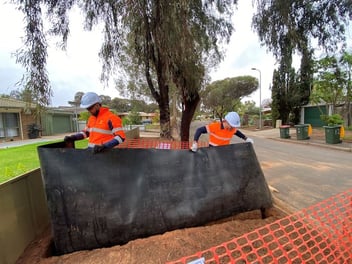Recycled pavement material aids runoff
A street in Melbourne’s City of Yarra will soon be repaved with a material that retains moisture, reduces stormwater runoff and uses recycled materials to do so.
A centre median in McIlwraith Street, Princes Hill, Victoria will soon be repaved using a high infiltration permeable pavement. Developed at the University of Melbourne, the pavement comprises recycled tyres, recycled glass, rock aggregates and binding material.
Unlike asphalt, permeable pavement allows water to pass through the surface. The water that is retained by the pavement can be used by the surrounding trees and plants, ultimately reducing the heat island effect. The permeable pavement also reduces stormwater runoff, and prevents pollutants from entering the drainage network.
Recycled tyres make up 70% of the pavement’s materials. These will be sourced from a Victorian facility, keeping them out of local landfills.
Using recycled tyres to create pavements is not new; they have been used extensively in creating flexible surfaces used in playgrounds and in landscaping. In the past, however, the material has been too flexible to carry heavy loads.
A team from the University of Melbourne set out to solve this problem. They experimented with a number of “recipes” to identify the optimum mix between recycled tyres, recycled glass, rock aggregates and binding materials.
The ideal mix was strong enough to carry heavy loads, while retaining some flexibility to reduce cracks caused by movement of natural ground or tree roots. After trials at the university, the material is now ready to be rolled out in the community.
The project is being funded in part by a $90,000 grant from the Victorian State Government through Sustainability Victoria’s Sustainable Infrastructure Fund. Yarra Council will contribute an additional $75,000 to the project.
Teams from Yarra City and the University of Melbourne will monitor the trial over the next two years, paying particular attention to the health and growth of the trees.


